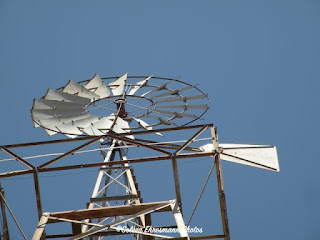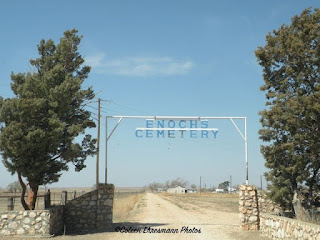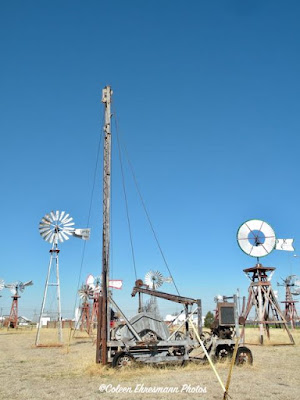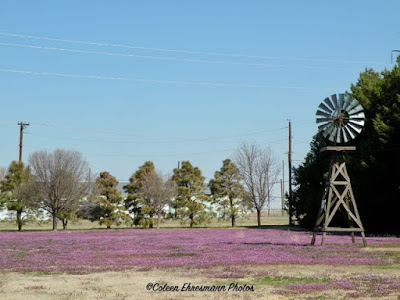Sunday's temperatures were in a comfortable springlike range urging me outside to move the deck furniture from the garage to the deck, clean some windows, and check on the flowers in the perennial flower bed.
We are retired educators enjoying the next phase in our lives. Traveling, geocaching and time with family and friends are how we spend our retirement days. We are enjoying the adventures of life after our working years.
Tuesday, April 13, 2021
Spring in the Flowerbed
Saturday, April 10, 2021
Day 2 of TX Road Trip
The plan for Day 2 was to geocache in the counties along the western side of the panhandle. In his planing for these road trips, Hubby looks for geocaches with the usual criteria: easy find (we are usually on a time constraint), found recently, caches with cemetery or welcome to in the title, or something really unusual. Sometimes, the cache description does not indicate how quirky it might be and until we drive past do we realize, we should stop and take a look. Anyone following behind us on the road might wonder at his driving ability!
After his return to Fort Concho, Lieutenant Charles Cooper wrote a letter to his father describing his experience of the tragic events. This geocache series traces the approximate route taken by the soldiers.
The story unfolds….
Military: Captain Nolan, Lt. Cooper, and 18 soldiers
Buffalo Hunter: 1
~~~~~~~~~~~~~~~~~~~~~~~~~~~~~~~~~~~~~~~~~
August 30, 1877
EXCERPT from Lt. Cooper's Letter to His Father written from Ft. Concho - Lt. Cooper describes the casualties and the separations....
We had now reduced our party to eighteen men, two officers and one buffalo hunter. We were almost completely used up. Our men had dropped back one by one, unable to keep up with us, their tongues were swollen and they were unable to swallow their saliva – for they like me, had no saliva to swallow. Men were grasping for breath and horses falling dead around us.
The Command were suffering so much for water, they were compelled to drink their own urine and their horses urine, having sugar along, I issued a liberal supply to the men which tended to make the urine palatable.
~~~~~~~~~~~~~~~~~~~~~~~~~~~~~~~~~~~~~~~~~
**The soldiers and the hunter are becoming disoriented and delusional. The officer’s maintain the military determination to survive.
Four Memorial Markers for the Buffalo Soldier losses nearby.
One of our final stops of the day ~ The title of the cache was interesting to me. The log sheet was in a fake pile of dog poop. We were in cotton country, so I wasn't certain what or where the cache might be. I admit, fake dog poop was not what either of us expected! But we have seen it before so we knew what it was when we saw it next to the fence post. No stains in our cottons!
Thursday, April 8, 2021
Day 1 of TX Road Trip
With Plan B in place and the two of us comfortable with it, it was time to hit the road and collect geocache finds in some more Texas counties. I am including a couple of maps as a reference point of where we are located and what we had planned. The maps will also show the number of TX counties and those in which we had traveled through and found at least one geocache.
I was hoping to see TX bluebells on this trip. This is as close as I got. Not bluebells. We saw many yards covered with the little purple flowers, more of a ground cover plant (weed?) and a great place for little black bugs to hide until they were disturbed.

















































